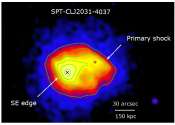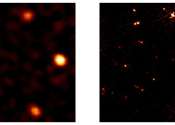Hubble views a potential galactic merger
This NASA/ESA Hubble Space Telescope image features the dwarf irregular galaxy NGC 5238, located 14.5 million light-years from Earth in the constellation Canes Venatici. Its unexciting, blob-like appearance seems to resemble ...









